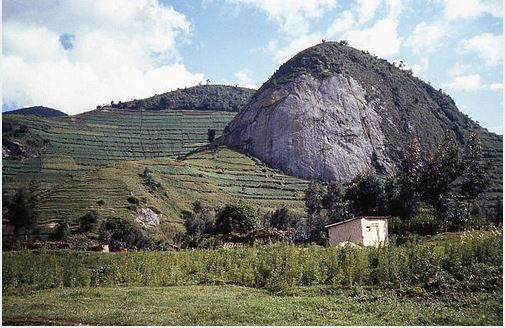Gishwati Mukura National Park
Home | Safaris | blog |
parks

Due to the need for conservation of flora and fauna in two forest areas at the corner of the Congo-Nile border in Rwanda, east of Africa, along the great biodiverse Albertine rift region, a decision was made; Gishwati forest to the north and Mukura forest to the south were combined to form one of the most rewarding conservation areas in Africa; Gishwati-Mukura national park in 2015.
The park has a unique story, biodiversity, and climate, though the newest, smallest, and unknown. It seats on approximately 35sqkm of land, with a wide range of rare wildlife species. The other three national parks are the famous volcanoes nation park- home to the endangered mountain gorillas, Nyungwe national park; home to over 13 unique chimpanzee species, and Akagera national park; home to Africa’s big 5.
In the year 1994, the forest was used as an asylum for the locals during the genocide ethnic conflict between the Hutu and Tutsi, a rebellion that saw over 800,000 innocent people lose their lives brutally. This refuge led to great destruction and deforestation of the natural cover. Mukura forest was made a wildlife reserve for over half a century, before transforming it into a national park status, though after losing over 50% of its land area, due to deforestation and illegal mining activities.
The two forests reserves were combined and declared a national park in 2015, with lots of efforts dedicated to conservation activities, which has seen great rise in the numbers of unique wildlife species and tree species, as well as transforming it into one of the most remarkable travel destinations, not only in Rwanda but also worldwide.
There is political stability, infrastructural development, and reforestation in and around the park. Gishwata forest has been expanded by over 1000 acres of land, yet with a buffer zone of tree grants in the national park. Also, there is an idea of creating a wildlife corridor that will cover Gishwati - Mukura, and Nyungwe national park- a unique move that will boost the survival and increase of the endangered primate species in these regions.
The park offers asylum to over 60 tree and shrub species, over 5 primate species, notably chimpanzees, blue monkeys, golden monkeys, black and white Columbus monkeys, and the rare L'Hoest's monkey species among others; over 80birdspecies, notably Rwenzori Turaco, wood hoopoe, sunbird, purple-breasted, grey crowned crane, martial eagle, and strange weave among others; mammals such as servals, black-fronted Duicker and red river lodge among others, and several reptile species. these and more have made visitors, researchers, and natives of the place get more anxious for growth and diversity and increase visitor numbers in the coming years.
Reasons to visit and activities in Gishwati-Mukura national park
2019 was the starting year of visits and activities in the park; with the following listed among what you should look out for;
Primate trekking
This is the main tourist activity in the park, done throughout the year. It all begins after attaining the tracking permit and can last for 1-5 hours of tracking through the jungle. The residents here include; the chimpanzees; humans cousins, white and black Columbus monkeys, olive baboons, and blue monkeys among others.
Birding
To every photographer, this park has a variety of bird species in the world, residents, and non-residents from across the globe. The experienced knowledgeable park rangers will help in identifying the different sounds, unique characteristics, and appearances of the bird species. Some of the notable ones include grey crowned crane, Ruwenzori Turaco, martial eagle, regal sunbird, Ruwenzori Batis, and the mountain yellow warblers.
Hiking and nature walk
Using the designated tracks in the forest, visitors have the opportunity to relax, learn more about the rare tree species, waterfalls, undulating hills, forest inhabitants, and many more in just a few hours, a day, or more.
Cultural experiences
With the need for more, and enjoying a wide range of experience, the trips get beyond the forest, but also the life and unique culture of people who live around the park. You can have a few hours of interaction with a new culture-one different from yours and discover the common and uncommon attributes in the language, behaviors, and customs.
Biking safari
It is here that you can find one of the best biking safari experience across Africa. The activity is done along the shores of Lake Kivu (Rwanda's freshwater lake), a way through to Nyungwe forest- Congo Nile trail. One gets to explore the countries rolling hills and rural life.
Accessing the park
It takes approximately 30min - 1 hour, to drive from Volcanoes national park, whereas it is 2-3 hours from Kigali city to the Gishwati-Mukura national park. Interestingly, you have the option of chartering a flight from Kigali international airport to Gishwati-Mukura national park. It can also be accessed through Uganda's mgahinga gorilla national park.
Amazingly you can also choose to combine your Gishwati-Mukura national park safari with gorilla trekking in volcanoes national park or game viewing in Akagera national park. It is in the middle of these two rewarding destinations. You can have your trip any month from December to August because you can find it dry or with low rains.
Where to Stay?
There are accommodation facilities all around the area and in the community - village stays. they range from budget to luxury accommodation, and the most famous one being Gishwati lodge.
With all the rare, plenty of flora and fauna in the park, political stability, and cool weather, nothing should stop you from visiting this unspoiled park for research, primate trekking, or any other reason.









